Arthrosis is a chronic joint disease in which cartilage of the joint is progressively destroyed.- As the cartilage is destroyed, bone changes that cover the cartilage, and in the combined capsule. What does the word Arthrosis mean and what are its synonyms?
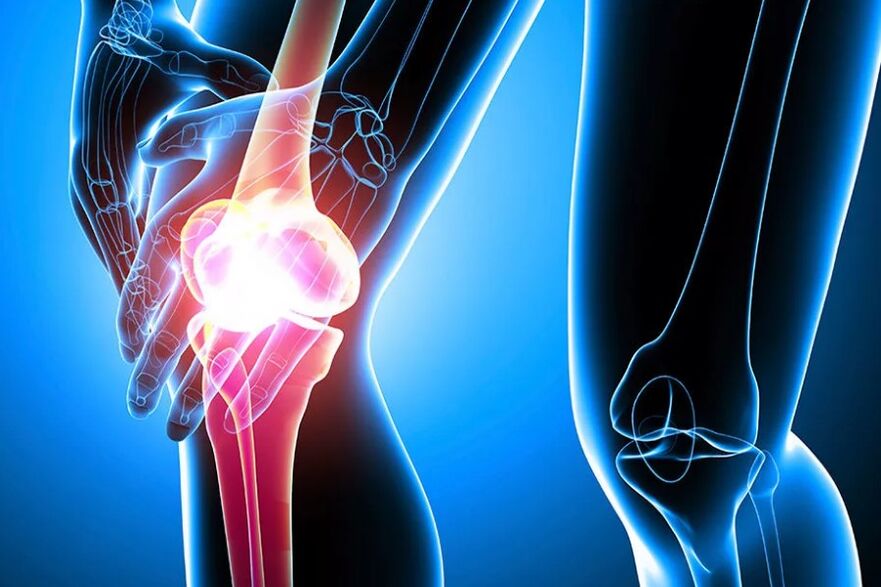
The word Arthrosis comes from the Greek word "arthros" - the joint and the suffix "ozis" - non -infectary disease.However, this detail is not completely accurate, as there are some inflammatory changes with arthrosis in the joint.In English -In Sampacking countries, "our" arthrosis is called arthritis (our "arthritis) in cases of vast majority, that is, inflammatory joint disease (suffix), while we are commonly called arthritis, joint damage in rheumatic diseases, infectious, infectious disadvantages, which try to correct another word with another word: in modern scientific articles, in modern scientific articles,The word osteoarthrosis is found more often ("Osteo" from Greek words - bone, "arthros" - united,, that is, united and non -inflammatory disease of the joint and bones).And again, in English -Sampacking countries, "our" osteos arthrosis is called osteoarthritis (osteoratritis), ie joint and bone inflammatory disease.
आर्थ्रोसिस शब्द ग्रीक शब्द "आर्थ्रोस" से आता है - संयुक्त और प्रत्यय "ओज़िस" - गैर -इनफ्लेमेटरी रोग। हालांकि, यह विवरण पूरी तरह से सटीक नहीं है, क्योंकि संयुक्त में आर्थ्रोसिस के साथ कुछ भड़काऊ परिवर्तन हैं। अंग्रेजी में -स्पेकिंग देशों में, विशाल बहुमत के मामलों में "हमारे" आर्थ्रोसिस को आर्थराइटिस (आर्थ्रिथिस) कहा जाता है, अर्थात् भड़काऊ संयुक्त रोग (इटिस प्रत्यय), जबकि हमें आमतौर पर गठिया कहा जाता है, रुमेटिक रोगों में संयुक्त क्षति, संयुक्त को संक्रामक, संक्रामक नुकसान, जो कि एक अन्य शब्द के साथ एक अन्य शब्द को सही करने की कोशिश करते हैं:
आधुनिक वैज्ञानिक लेखों में, ओस्टियोआर्थ्रोसिस शब्द अधिक बार पाया जाता है (ग्रीक शब्दों से "ओस्टियो" - हड्डी, "आर्थ्रोस" - संयुक्त, यानी, संयुक्त और हड्डियों की गैर -इनफ्लेमेटरी रोग)। और फिर से, अंग्रेजी -स्पेकिंग देशों में, "हमारे" ओस्टोज़ आर्थ्रोसिस को ऑस्टियोआर्थराइटिस (ओस्टोएरथ्रिथिस) कहा जाता है, अर्थात् संयुक्त और हड्डी की भड़काऊ रोग।
Often we hear questions from patients: "First, arthrosis was diagnosed with me, and now osteoarthritis is already writing. Is it really so bad?"In fact, arthrosis and arthritis are synonyms, and your doctors talked about the same thing.
As we have already noticed the beginning, with arthrosis (osteoarthrosis), cartilage is progressively destroyed, and bones are gradually involved in the process.With bone arthrosis, a section of sclerosis (condensation) is the first, resulting in the loss of shock -absorbing properties.Then there are points with bone edges (exostosis), often accidentally called "called" " Salt deposits "- In fact, with simple arthrosis, there is no salts of salts.With another course of the disease, bone begins to bend, deformed, ulcer form: often called disease.Rheumatism (osteoarthrosis).In chronic medical books, you can sometimes find the phrase "decomposing arthrosis", but now it is almost never used. The exact causes of arthrosis development were considered unknown for a long time, so there is another name for the disease -. Unnecessary arthrosis
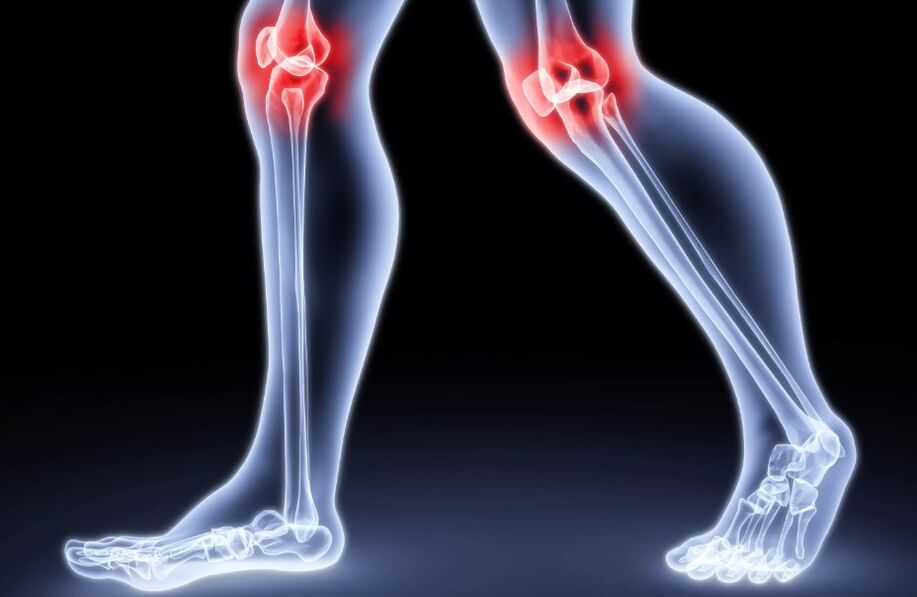
, ie, which originated for unknown causes or unknown causes, which led to unknown causes or disappointment.Of course, now scientists no longer consider arthrosis for a mystery and the reasons for its development are known.What is more about the causes of arthrosis, what is below primary and secondary arthrosis. Arthrosis more often affects joints that experience maximum loads (hip, knee, ankle joints, hand joints).Arthrosis of the hip joint is called cucuckerthrosis (from the word "coxa" - hip), the ankle joint - crucrosytaritis ("cruelis" - lower leg), knee - Gonarterosis
("Jean" - Knee).In most cases, arthrosis affects both knee joints, while one of the joints can be destroyed more.In this case, the diagnosis looks like a bilateral gonarthrosis with a major damage to the right (or left) knee joint.गोनरथ्रोसिस ("जीन" - घुटने)। ज्यादातर मामलों में, आर्थ्रोसिस दोनों घुटने के जोड़ों को प्रभावित करता है, जबकि जोड़ों में से एक को अधिक नष्ट किया जा सकता है। इस मामले में, निदान दाईं (या बाएं) घुटने के जोड़ के लिए एक प्रमुख क्षति के साथ एक द्विपक्षीय गोनारथ्रोसिस की तरह लगता है।
Often, not one, but many joints are affected by arthrosis, so they use another word - versatile. Which means three or more joints (two symmetrical, for example, knee, and some others).In this case, the diagnosis usually seems to be as follows: with a major damage to the knee joints (or one of them) with polyososteoarthrosis. Why does the arthrosis of the knee joint occur? Arthrosis of the knee joint is different.Depending on the causes of its occurrence, primary and secondary arthrosis is distinguished. The primary arthrosis of the knee joint. Articular cartilage is constantly destroyed and updated, and usually these processes are balanced.With age, the update of the cartilage slows down and the destruction of the cartilage, which is called the decline or the process of degeneration, begins to prevail.
घुटने के जोड़ का आर्थ्रोसिस क्यों होता है?
घुटने के जोड़ का आर्थ्रोसिस अलग है। इसकी घटना के कारणों के आधार पर, प्राथमिक और माध्यमिक आर्थ्रोसिस प्रतिष्ठित है।
घुटने के जोड़ का प्राथमिक आर्थ्रोसिस
आर्टिकुलर कार्टिलेज लगातार नष्ट हो जाता है और अद्यतन किया जाता है, और आम तौर पर ये प्रक्रियाएं संतुलित होती हैं। उम्र के साथ, उपास्थि का अद्यतन धीमा हो जाता है और उपास्थि का विनाश, जिसे गिरावट या अध: पतन की प्रक्रिया कहा जाता है, प्रबल होने लगता है।
The process of synthesis and destruction of cartilage is normally balanced.If the degeneration begins, the arthrosis of the knee joint will begin. In most cases, the degeneration of the cartilage, namely, the development of arthrosis, occurs after 45–50 years, but sometimes arthrosis may develop in 20 years.Fortunately, the development of arthrosis at such a young age is extremely rare. People are more or less for the arthrosis of the knee joint.As a rule, if arthrosis occurs, at just 40-60 years of age, and if there is no arthrosis until the age of 60, then most likely it is likely that it will not happen now, or rather, arthrosis will be negligible (some decentralized changes in the knee joint are found in all the elderly people, but they are expressed separately).Do, for example, for 60 years, then about 90%of arthrosis will be signs, but not all of them consider their knees to be problematic.This is especially true for men that often "severe" arthrosis does not show themselves or causes minimal discomfort.
Primary arthrosis is spontaneously, that is, without launching factors, so it is called idiopathic, which we had spoken earlier.
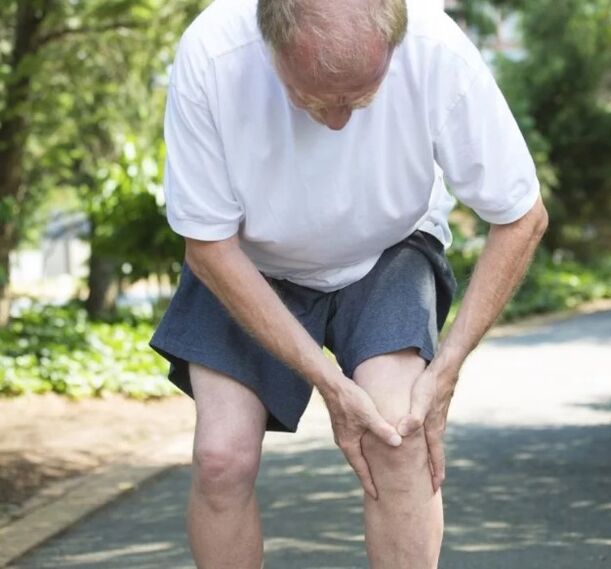
Therefore, we have already come to know that age is one of the main factors that determine the development of arthrosis, as cartilage degeneration processes begin to strengthen with age.Every fourth person over the age of 55 suffers from arthrosis of knee joints.But we also noted that with age, arthrosis does not develop in all.So there are other reasons.Before we list them, we note that there is no main, main reason.Arthrosis of the knee joint develops in terms of reasons, while some play a large role, while others - less.
यह ध्यान रखना महत्वपूर्ण है कि यदि आप सभी लोगों के लिए रेडियोग्राफी लेते हैं और रेडियोग्राफी करते हैं, उदाहरण के लिए, 60 वर्ष के लिए, तो लगभग 90%आर्थ्रोसिस के संकेत होंगे, लेकिन उनमें से सभी अपने घुटनों को समस्याग्रस्त नहीं मानते हैं। यह उन पुरुषों के लिए विशेष रूप से सच है जो अक्सर "गंभीर" आर्थ्रोसिस खुद को नहीं दिखाते हैं या न्यूनतम असुविधा का कारण बनते हैं।
प्राथमिक आर्थ्रोसिस अनायास होता है, यानी कारकों को लॉन्च किए बिना, इसलिए इसे इडियोपैथिक कहा जाता है, जिसके बारे में हमने पहले बात की थी।
इसलिए, हमें पहले ही पता चला है कि उम्र उन मुख्य कारकों में से एक है जो आर्थ्रोसिस के विकास को निर्धारित करते हैं, क्योंकि कार्टिलेज अध: पतन की प्रक्रियाएं उम्र के साथ प्रबल होने लगती हैं। 55 वर्ष से अधिक उम्र के प्रत्येक चौथे व्यक्ति ने घुटने के जोड़ों के आर्थ्रोसिस से ग्रस्त है। लेकिन हमने यह भी नोट किया कि उम्र के साथ, आर्थ्रोसिस सभी में विकसित नहीं होता है। तो अन्य कारण हैं। इससे पहले कि हम उन्हें सूचीबद्ध करें, हम ध्यान दें कि कोई मुख्य, मुख्य कारण नहीं है। घुटने के जोड़ का आर्थ्रोसिस कारणों के संदर्भ में विकसित होता है, जबकि कुछ एक बड़ी भूमिका निभाते हैं, जबकि अन्य - कम।
land. More often, women of the knee joints are suffering loss by women.The exact reasons for this are unknown, but you can try to explain the following reasons.On average, women's life expectancy is higher than men, and accordingly, the average elderly woman will express more degenerative processes.In addition, body weight in women is slightly higher on average.In women, bone shape is smaller than men, and, combined with a high body weight, it leads to a high pressure in the knee joint, and accordingly, the more acute mechanical destruction of the cartilage.In an overwhelming majority of cases in women, arthrosis begins to appear after the termination of menstruation, and, possibly, the lack of estrogen determines the development of arthrosis.Note that estrogen is certainly attempted to treat arthrosis of the knee joint in women after menopause, but so far they are unsuccessful. Weight.
Of course, the larger the body weight, the more load has to be transferred to our knee joints.In addition, excess weight reduces physical activity and leads to weakness of the hip muscles.For more active synthesis of cartilage, movements (without additional pressure) are required, and with a sedentary lifestyle, cartridges of cartilage begin to strengthen.The hip muscles are important stabilizers of the knee joint, and with the weakness of these muscles, the movement in the knee joint is more painted, which accelerates the destruction of the cartilage.In general, these procedures can be described as a vicious cycle: The larger the body weight, the faster the knee joint is destroyed, the more pain it is, the more difficult it is, which causes the body's overweight again.बेशक, शरीर का वजन जितना बड़ा होगा, उतना ही अधिक लोड को हमारे घुटने के जोड़ों में स्थानांतरित करना होगा। इसके अलावा, अधिक वजन शारीरिक गतिविधि को कम करता है और कूल्हे की मांसपेशियों की कमजोरी की ओर जाता है। उपास्थि के अधिक सक्रिय संश्लेषण के लिए, आंदोलनों (अतिरिक्त दबाव के बिना) आवश्यक हैं, और एक गतिहीन जीवन शैली के साथ, उपास्थि के कारतूस की प्रक्रियाएं प्रबल होने लगती हैं। कूल्हे की मांसपेशियां घुटने के जोड़ के महत्वपूर्ण स्टेबलाइजर्स हैं, और इन मांसपेशियों की कमजोरी के साथ, घुटने के जोड़ में आंदोलन अधिक चित्रित हो जाता है, जो उपास्थि के विनाश को तेज करता है। सामान्य तौर पर, इन प्रक्रियाओं को एक दुष्चक्र के रूप में वर्णित किया जा सकता है: शरीर का वजन जितना बड़ा होता है, घुटने के जोड़ को उतना ही तेजी से नष्ट कर दिया जाता है, जितना अधिक दर्द होता है, उतना ही मुश्किल होता है, जिससे फिर से शरीर का अधिक वजन होता है।
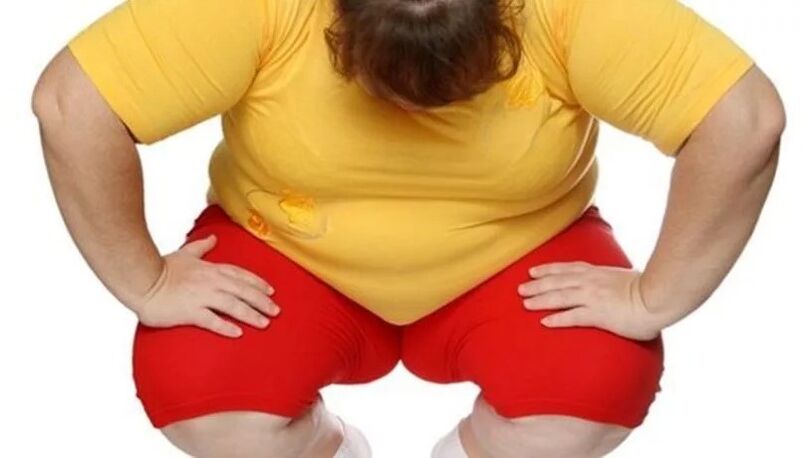
The vicious cycle of obesity and arthrosis of the knee joint. On the other hand, only arthrosis of the knee joint develops only among full people - those who have no obesity can also suffer from arthrosis.Then, this is because there is no one reason for arthrosis.
Heredity.It has long been observed that arthrosis of knee joints is a "family" disease.If you have arthrosis or your parents, unfortunately, the possibility of this disease is more with you.Scientists have discovered many gene characteristics that are responsible, for example, individual features of the structure of the main cartridge of the cartilage - collagen, but, unfortunately, so far these discoveries have no practical significance, because we cannot affect the prevention or treatment of arthrosis.There is evidence that the heritage of arthrosis is transmitted along the female line, which partially explains their great tendency to the disease.
The primary arthrosis of the knee joint is not only for one reason, but only with their totality.At the same time, arthrosis of the knee joint is for one degree or another in more than 60 people, but the severity of arthrosis is very different, and not always arthrosis found on radiography itself.In fact, it is even more difficult: there will be no pain in the knee joint in an elderly person or, moreover, at the age of 40–60, will be accompanied by changes in the radiograph characteristic of arthrosis. For example, scientists have found that 76% of the elderly found arthrosis with complaints of knee pain on radiographs.
That is, there is no pain in an elderly person in the knee joint, there is essential knee joint arthrosis.
उदाहरण के लिए, वैज्ञानिकों ने पाया है कि रेडियोग्राफ़ पर घुटनों में दर्द की शिकायतों के साथ 76% बुजुर्गों ने आर्थ्रोसिस पाया। अर्थात्, एक बुजुर्ग व्यक्ति में घुटने के जोड़ में कोई दर्द नहीं है, जरूरी घुटने के जोड़ का आर्थ्रोसिस है।At the same time, in all the elderly people with arthrosis of the knee joints found on radiographs, only 81% will complain about pain.This is that, there is not always pain in existing arthrosis. Tightly, there is no compulsory relationship with the severity of pain with the severity of arthrosis of the knee joint on the radiograph.It happens that changes on radiographs are completely insignificant, and the pain is strong, and it happens in another way: the joint is completely destroyed on the radiograph, and a person can ride a bicycle, can engage in yoga, can act as a malarus, and such cases we get almost every day, more times, the arthrosis of the knead starts.Radiograph of knee joint affected by arthrosis.The blue arrow marked the outer section of the joint, and the interior of the orange -joint.Note how the difference between bones is already from inside: Cartilage does not appear on the radiograph, and this is the difference which means cartilage.In this case, there is a practically no cartilage left inside the knee joint and the bone already rubs on the bone. With the gradual friction of the cartilage from inside the knee joint, the leg starts bending.Since arthrosis often affects the knee joints, that is, it is bilateral, both legs bends, and an O-shaped leg is deformation (cheercendant deformation).. Low generally (in about 10% of cases), the outer parts of the joint are affected by arthrosis, and in this case the X-shape (Walgus) is initiated in this case.यही है, हमेशा मौजूदा आर्थ्रोसिस में दर्द नहीं होता है।
कड़ाई से, रेडियोग्राफ़ पर घुटने के जोड़ के आर्थ्रोसिस की गंभीरता के साथ दर्द की गंभीरता का कोई अनिवार्य संबंध नहीं है। ऐसा होता है कि रेडियोग्राफ़ पर परिवर्तन पूरी तरह से महत्वहीन होते हैं, और दर्द मजबूत होता है, और यह दूसरे तरीके से होता है: संयुक्त रेडियोग्राफ़ पर पूरी तरह से नष्ट हो जाता है, और एक व्यक्ति साइकिल की सवारी कर सकता है, योग में संलग्न हो सकता है, एक मलेरस के रूप में काम कर सकता है, और ऐसे मामले हम लगभग हर दिन मिलते हैं।
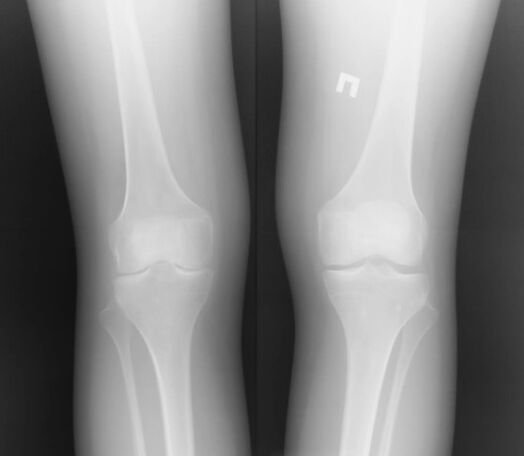
अधिक बार, घुटने के जोड़ का आर्थ्रोसिस आंतरिक (औसत दर्जे का) विभाग से शुरू होता है।
अंदर से आर्थ्रोसिस से प्रभावित घुटने के जोड़ का रेडियोग्राफ़। नीले तीर ने संयुक्त के बाहरी खंड, और नारंगी - संयुक्त के इंटीरियर को चिह्नित किया। इस बात पर ध्यान दें कि हड्डियों के बीच पहले से ही अंतर अंदर से कैसे है: कार्टिलेज रेडियोग्राफ़ पर दिखाई नहीं देता है, और यह यह अंतर है जिसका अर्थ है उपास्थि। इस मामले में, व्यावहारिक रूप से घुटने के जोड़ के अंदर कोई उपास्थि नहीं बची है और हड्डी पहले से ही हड्डी पर रगड़ती है।
घुटने के जोड़ के अंदर से उपास्थि के क्रमिक घर्षण के साथ, पैर झुकना शुरू हो जाता है। चूंकि आर्थ्रोसिस अक्सर घुटने के जोड़ों को प्रभावित करता है, अर्थात्, यह द्विपक्षीय है, दोनों पैर मुड़ने लगते हैं, और एक ओ-आकार का पैर विरूपण होता है (वैरियर विरूपण)।
कम सामान्यतः (लगभग 10% मामलों में), संयुक्त के बाहरी हिस्से आर्थ्रोसिस से प्रभावित होते हैं, और इस मामले में एक्स-आकार (वाल्गस) विरूपण शुरू होता है।
Of course, with curvature, the internal (with O-shaped) or the load (with an ex-shaped) deformation variants increases even more, and arthrosis will develop rapidly and irreversibly. Arthrosis can start not only in the inner or external section, but also the inter-cylinds of the knee (patella) and the femur.This option is called Patelo-Fomorel Arthrosis and it occurs as a rule, because the tilt, the sublime of a pattern, the lateral hyperprension syndrome. On which a separate article is dedicated on our website or thereafter. Fractures of Pattela., Which you can also read in a separate article. Secondary arthrosis of the knee joint. Arthrosis of the knee joint can also develop due to any specific reasons, in which case arthrosis is called secondary.Now we will talk briefly about the options of secondary arthrosis. Post -tractic arthrosis of the knee joint.
Knee joint injuries, of course, do not add a joint of health and almost all of them, in a way or any other, increase the risk of arthrosis. One of the most common injuries of the knee joint is the breakdown of menisis, dedicated to a separate article on our website.Unfortunately, anyone with meniscus intervals was never likely to develop arthrosis.If an average (internal) meniscus is damaged, arthrosis will develop in the interior of the knee joint.And, accordingly, if the outer meniscus bursts, the arthrosis will develop in the external joint of the joint.Note that the breakdown of the meniscus is not always necessary that it leads to arthrosis, the possibility of its development.Of course, the more meniscus is damaged, the higher the risk of arthrosis.झुकाव, एक पैटर्न का उदात्तता, पार्श्व हाइपरप्रेशन सिंड्रोम जिस पर एक अलग लेख हमारी वेबसाइट पर या उसके बाद समर्पित है पटेला के फ्रैक्चर , जिसे आप एक अलग लेख में भी पढ़ सकते हैं।
घुटने के जोड़ के माध्यमिक आर्थ्रोसिस
घुटने के जोड़ का आर्थ्रोसिस भी किसी भी विशिष्ट कारणों के कारण विकसित हो सकता है, इस मामले में आर्थ्रोसिस को माध्यमिक कहा जाता है। अब हम द्वितीयक आर्थ्रोसिस के विकल्पों के बारे में संक्षेप में बात करेंगे।
घुटने के जोड़ के पोस्ट -ट्रॉमेटिक आर्थ्रोसिस। घुटने के जोड़ की चोटें, निश्चित रूप से, स्वास्थ्य का एक संयुक्त नहीं जोड़ते हैं और उनमें से लगभग सभी, एक तरह से या किसी अन्य, आर्थ्रोसिस के जोखिम को बढ़ाते हैं।
घुटने के जोड़ की सबसे आम चोटों में से एक मेनिसिस का टूटना है, जो हमारी वेबसाइट पर एक अलग लेख के लिए समर्पित है। दुर्भाग्य से, मेनिस्कस के अंतराल वाले किसी भी व्यक्ति को कभी भी आर्थ्रोसिस विकसित होने की संभावना नहीं थी। यदि एक औसत दर्जे का (आंतरिक) मेनिस्कस क्षतिग्रस्त हो जाता है, तो आर्थ्रोसिस घुटने के जोड़ के इंटीरियर में विकसित होगा। और, तदनुसार, यदि बाहरी मेनिस्कस फट जाता है, तो आर्थ्रोसिस संयुक्त के बाहरी संयुक्त में विकसित होगा। ध्यान दें कि मेनिस्कस का टूटना हमेशा जरूरी नहीं कि आर्थ्रोसिस की ओर ले जाए, इसके विकास की संभावना। बेशक, जितना अधिक मेनिस्कस क्षतिग्रस्त होता है, आर्थ्रोसिस का जोखिम उतना ही अधिक होता है।
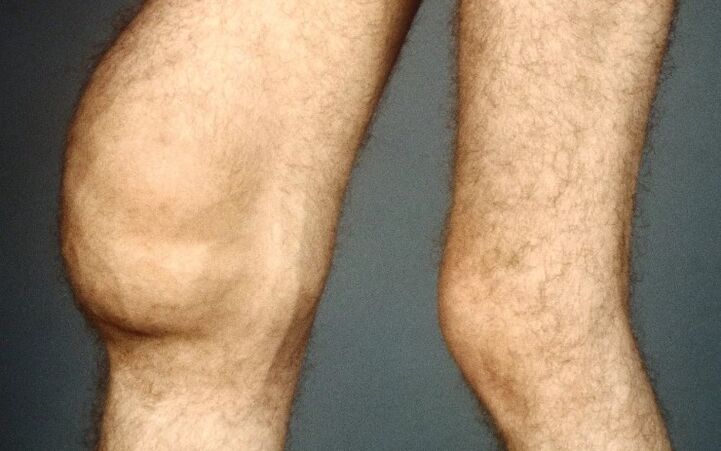
Another reason for the development of arthrosis of the knee joint is the rupture of the ligaments, for example, a rupture of the front cruciate ligament.As a result of the rupture of the ligament in the joint, instability may appear, which will definitely damage the development of cartilage and arthrosis.Naturally, cartilage damage depends on the degree of instability, which can be different. A very heavy injury to the knee joint is a fracture of tibeles of the tibia or fertile fractures of the Uru Kondil. If the fracture line enters the articular surface, such a fracture is called intrarticular.Almost any intra -tricular fracture is accompanied by displacement of pieces, and thus, the size of the articular surface changes.This step that appears as a result of the change leads to the progressive destruction of the cartilage and the presence of arthrosis.Of course, the heavier is a fracture, the larger the large interstitial fracture of the pieces, the more cartilage is damaged and the risk of arthrosis is higher.After heavy multi -harded fractures of tibial condils, arthrosis develops in about 100% of cases, even despite the osteosynthesis surgery (eradication of bone pieces and tied with screws, plates, etc.).
घुटने के जोड़ के लिए एक बहुत भारी चोट टिबिया के टिबिअल्स का एक फ्रैक्चर है या ऊरु कोंडिल के फ्रैक्चर हैं यदि फ्रैक्चर लाइन आर्टिकुलर सतह में प्रवेश करती है, तो इस तरह के फ्रैक्चर को इंट्राआर्टिकुलर कहा जाता है। लगभग किसी भी इंट्रा -ट्रिकुलर फ्रैक्चर के साथ टुकड़ों के विस्थापन के साथ होता है, और इस प्रकार, आर्टिकुलर सतह का आकार बदल जाता है। यह कदम जो बदलाव के परिणामस्वरूप दिखाई देता है, अनिवार्य रूप से उपास्थि के प्रगतिशील विनाश और आर्थ्रोसिस की उपस्थिति की ओर जाता है। बेशक, भारी एक फ्रैक्चर, टुकड़ों का बड़ा अंतरालीय फ्रैक्चर जितना बड़ा होता है, उतना ही उपास्थि क्षतिग्रस्त होती है और आर्थ्रोसिस का जोखिम अधिक होता है। टिबियल कॉन्डिल के भारी बहु -हर्नड फ्रैक्चर के बाद, आर्थ्रोसिस लगभग 100% मामलों में विकसित होता है, यहां तक कि पूरी तरह से प्रदर्शन किए गए ओस्टियोसिंथेसिस सर्जरी (हड्डी के टुकड़ों का उन्मूलन और शिकंजा, प्लेट, आदि के साथ बन्धन) के बावजूद भी विकसित होता है।



















































